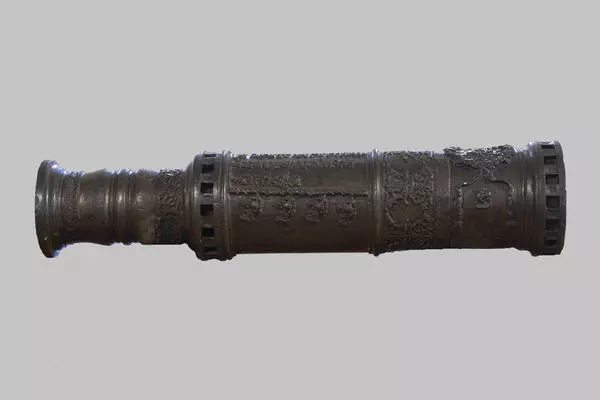The exhibition displays a copy of a dish on which Ivan Ikonnikov, a merchant from Tyumen, presented bread and salt to the crown prince Alexander Nikolayevich in 1837.
In his monograph, the historian Zygmunt Librowicz, wrote about presenting a clay dish to the Russian Tsar Nicholas I during his visit to the Tobolsk Governorate. It was based on the memories of the exiles Ewa Felinska and Rafal Blonski. A bibliographical dictionary published by the Polish Academy of Sciences contains the same information. However, it is reliably known that Nicholas I was neither in Tyumen nor in Tobolsk. Most likely, the authors of the publications confused the tsar with the Heir apparent. It was the crown prince Alexander who was presented with the dish, an exact copy of which is housed in the Tyumen Museum.
The front side of the dish bears a glazed inscription on the edge of the piece: “The Tyumen City Society dares to offer bread and salt.” The other side reads: “This bread and salt were presented by the city mayor Ivan Ikonnikov”.
In 1841, writer Yegor Rastorguev told in his book “Journey to Siberia in 1837 by His Imperial Highness, the Heir, Crown Prince”:
In his monograph, the historian Zygmunt Librowicz, wrote about presenting a clay dish to the Russian Tsar Nicholas I during his visit to the Tobolsk Governorate. It was based on the memories of the exiles Ewa Felinska and Rafal Blonski. A bibliographical dictionary published by the Polish Academy of Sciences contains the same information. However, it is reliably known that Nicholas I was neither in Tyumen nor in Tobolsk. Most likely, the authors of the publications confused the tsar with the Heir apparent. It was the crown prince Alexander who was presented with the dish, an exact copy of which is housed in the Tyumen Museum.
The front side of the dish bears a glazed inscription on the edge of the piece: “The Tyumen City Society dares to offer bread and salt.” The other side reads: “This bread and salt were presented by the city mayor Ivan Ikonnikov”.
In 1841, writer Yegor Rastorguev told in his book “Journey to Siberia in 1837 by His Imperial Highness, the Heir, Crown Prince”:




